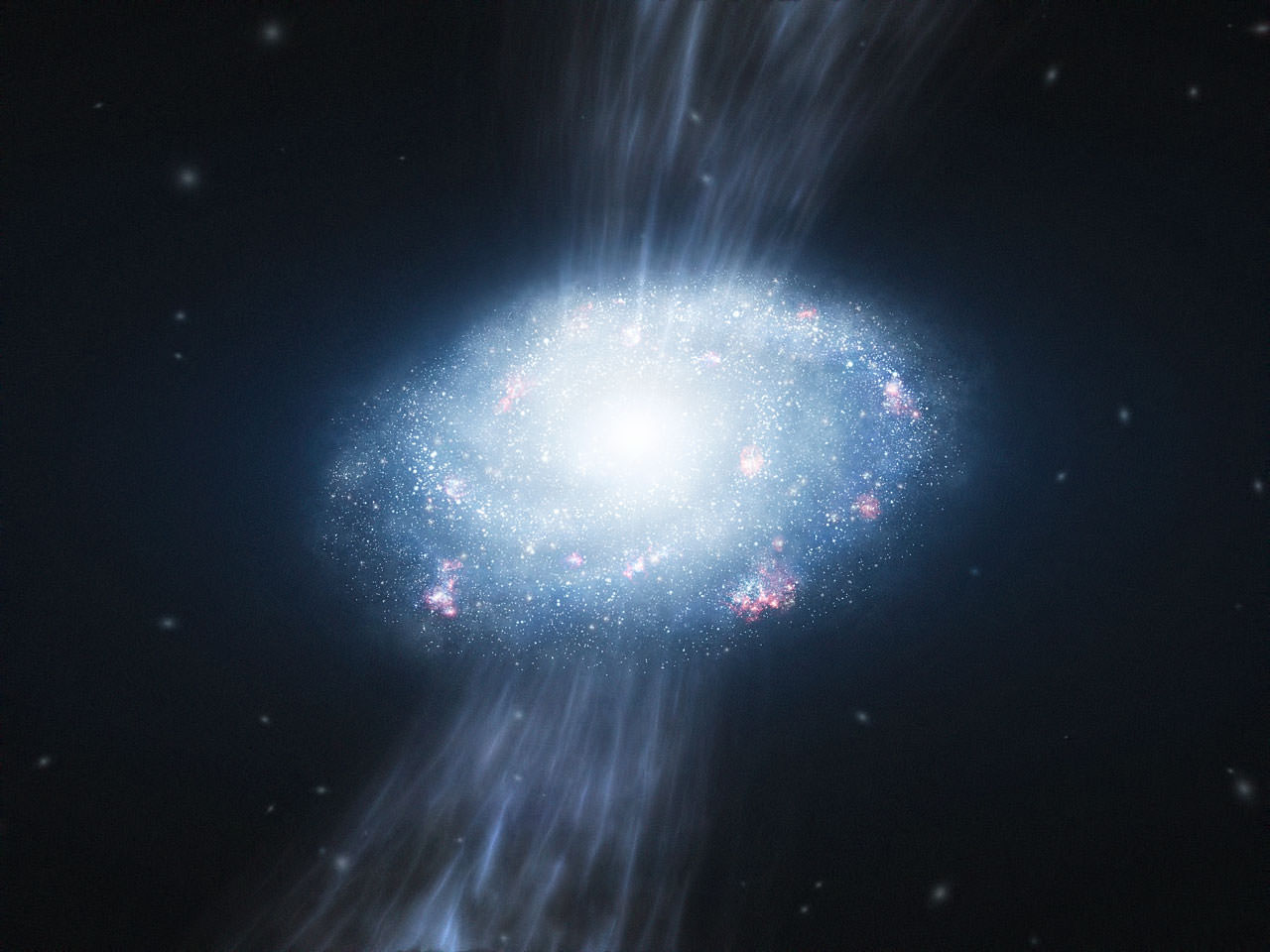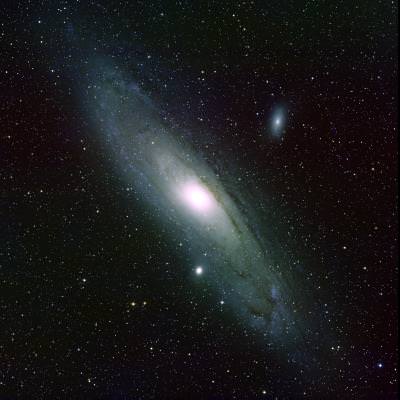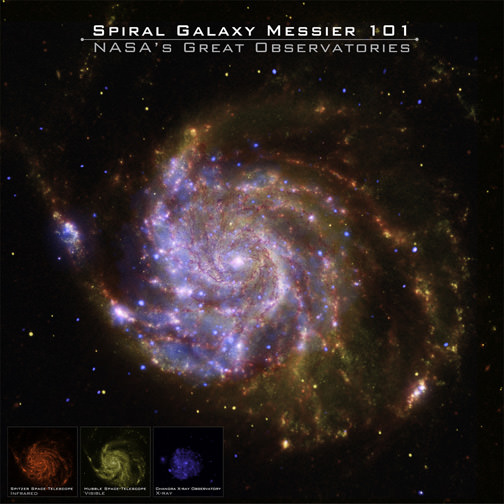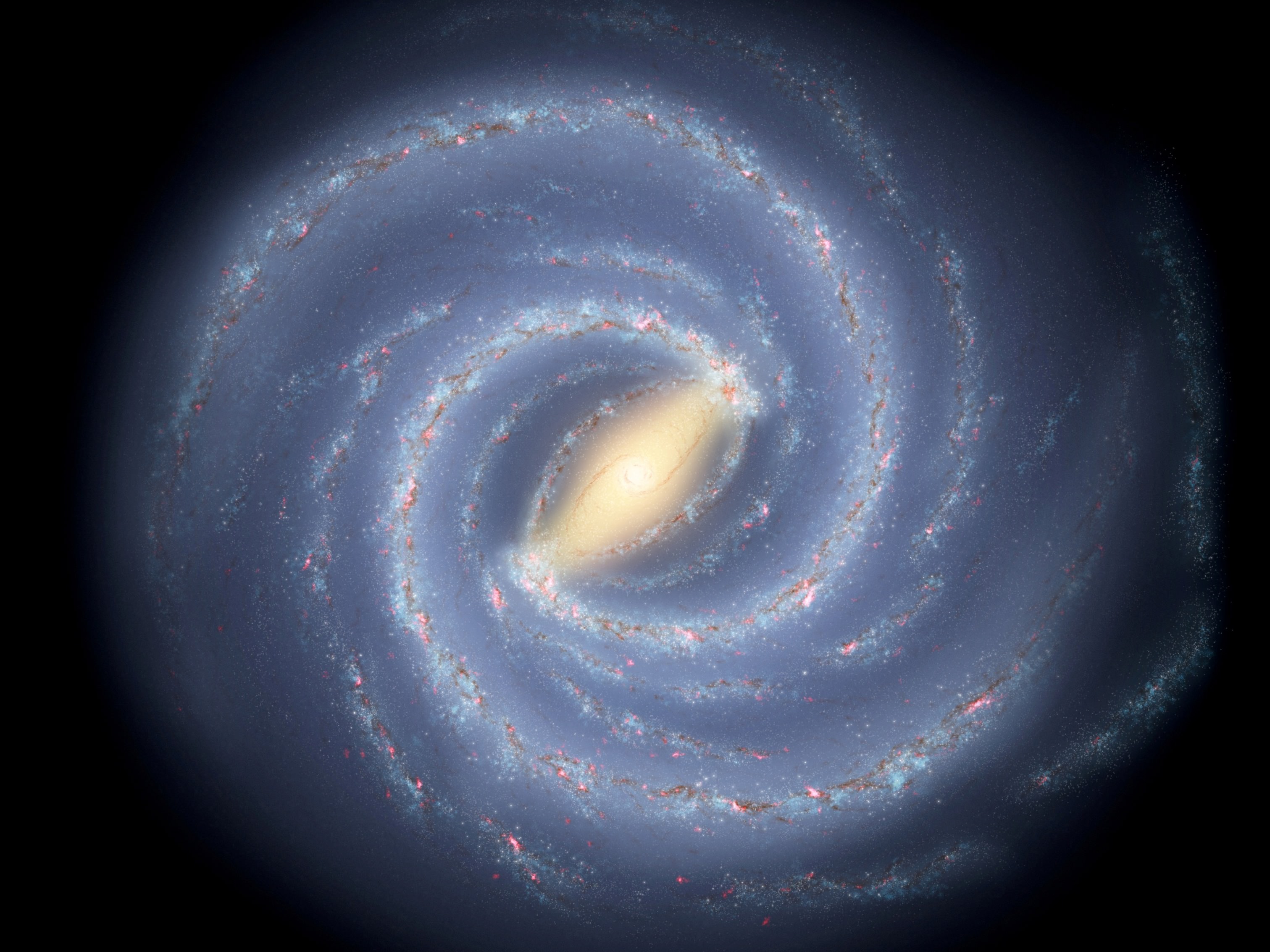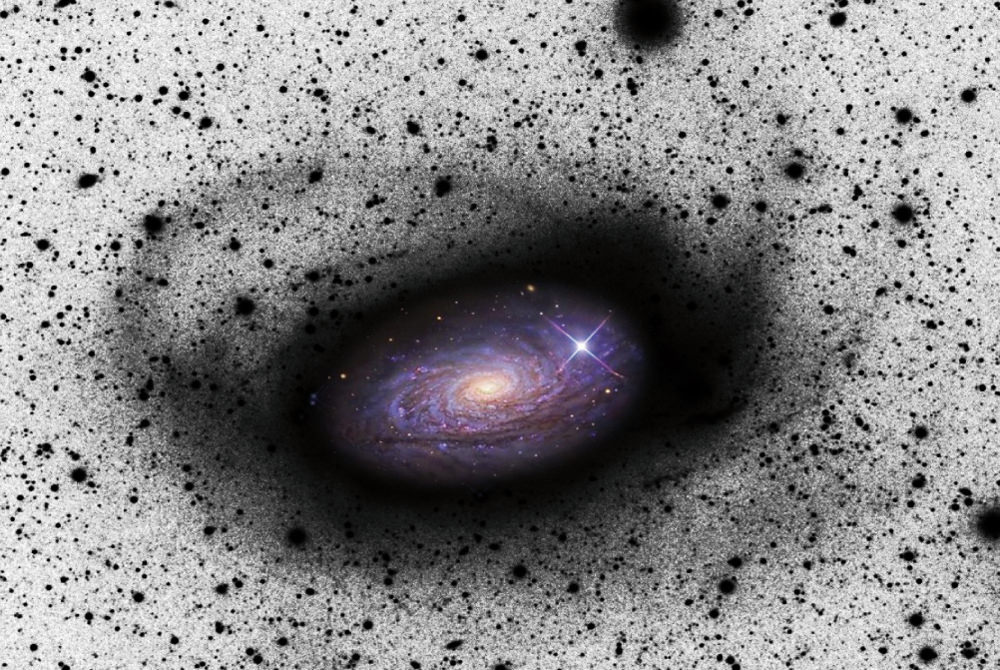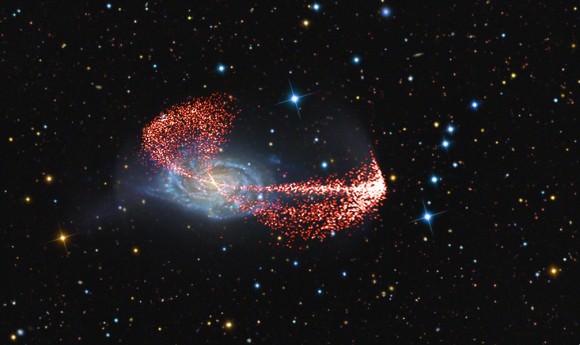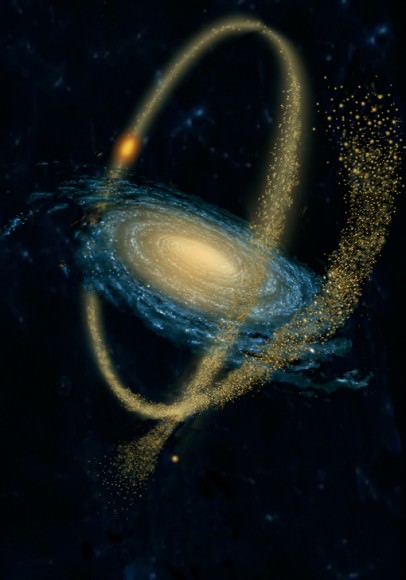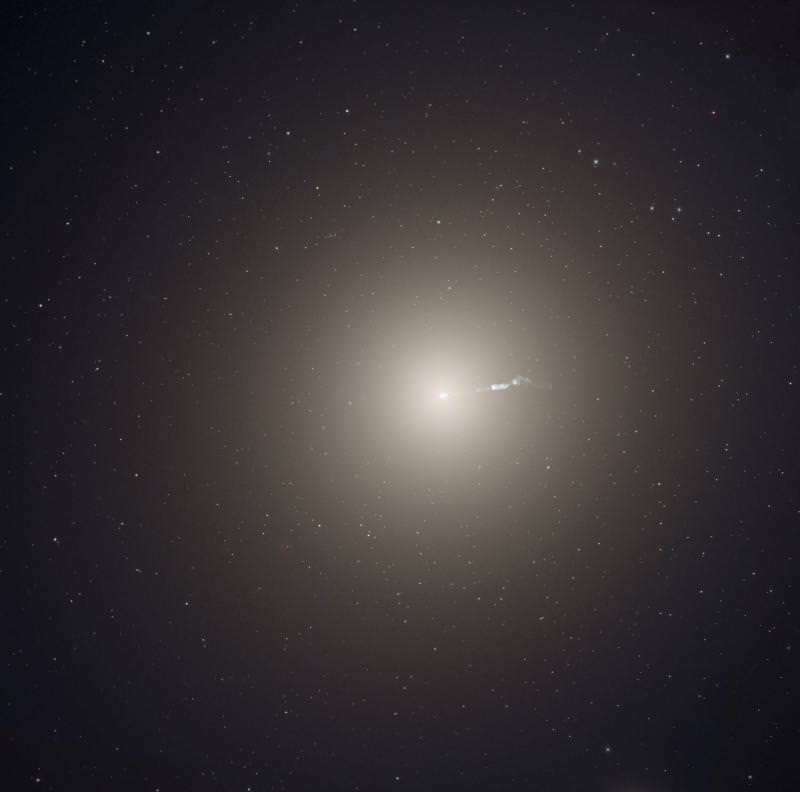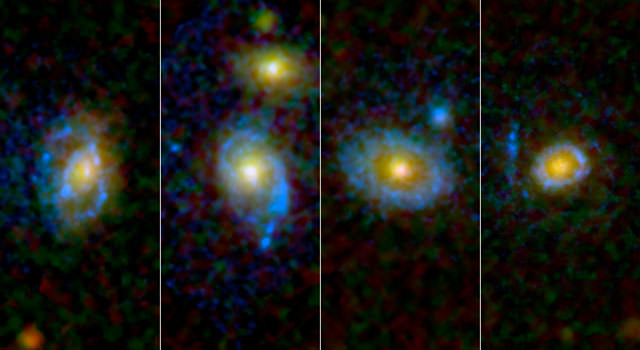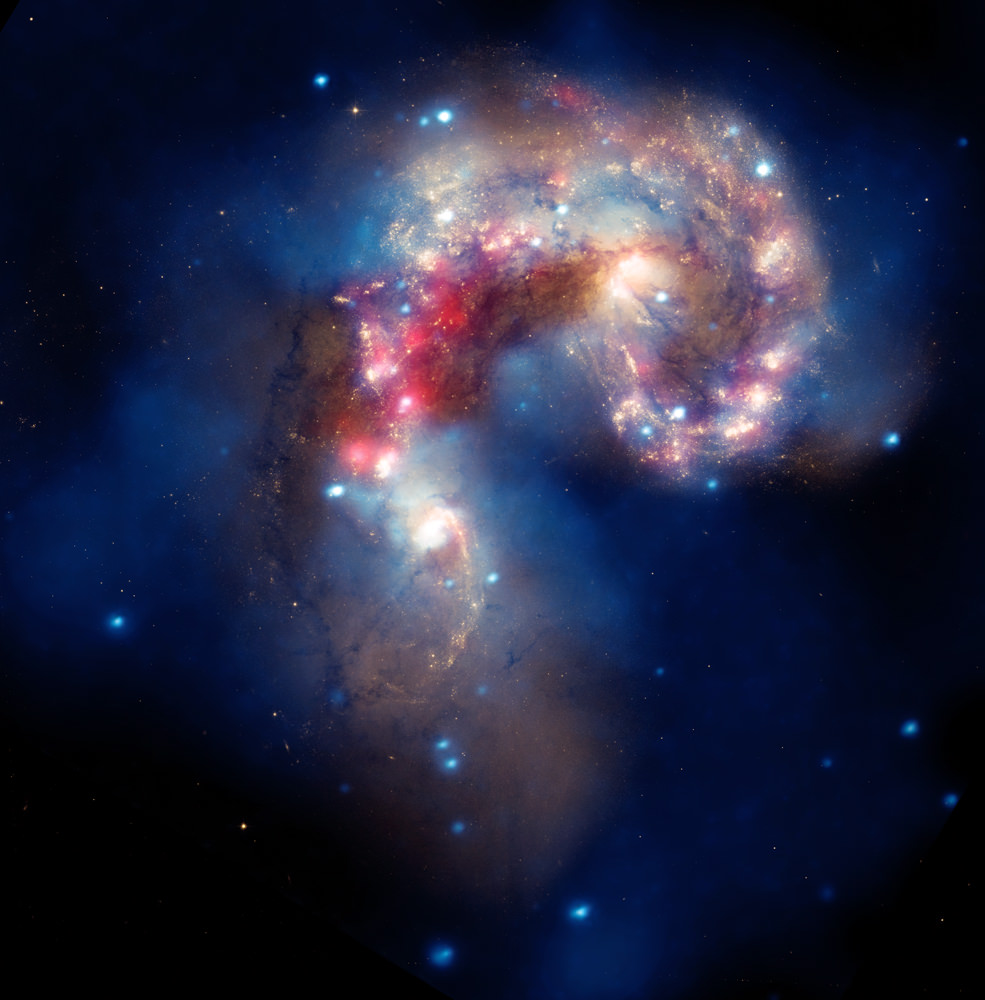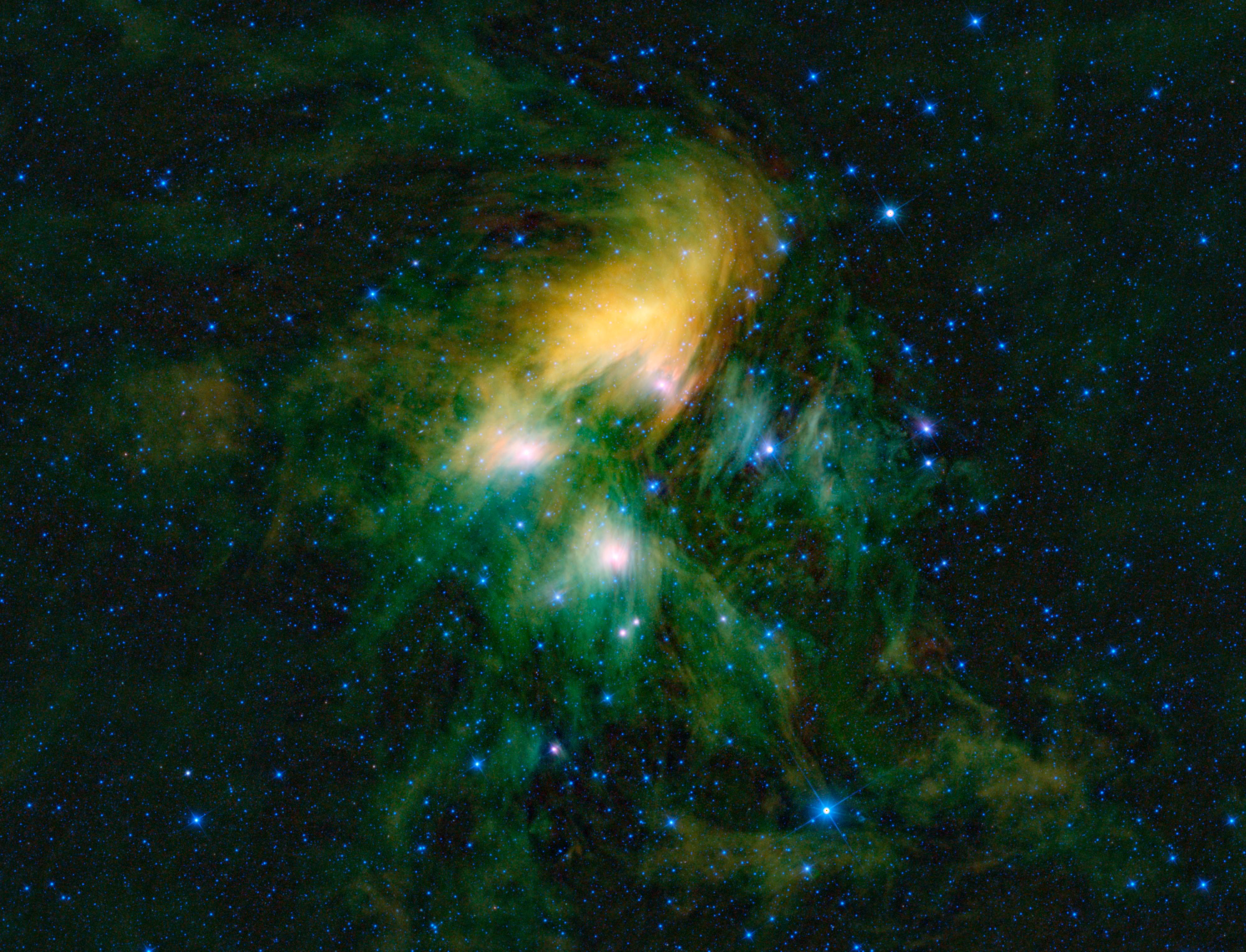[/caption]
Title this ‘Zombie Galaxies’ or ‘Night of the Living Galaxies.’ Astronomers have found mysterious, giant loops of ultraviolet light around old, massive galaxies, which were presumed to be “dead,” and these galaxies seem to have come back to life. Somehow these “over-the-hill galaxies” have been infused with fresh gas to form new stars that power these truly gargantuan rings, some of which could encircle several Milky Way galaxies.
The discovery of these rings implies that old bloated galaxies that were once devoid of star-making can be reignited with star birth, and that galaxy evolution does not proceed straight from the cradle to the grave.
“In a galaxy’s lifetime, it must make the transition from an active, star-forming galaxy to a quiescent galaxy that does not form stars,” said Samir Salim, lead author of a recent study and a research scientist in the department of astronomy at Indiana University, Bloomington. “But it is possible this process goes the other way, too, and that old galaxies can be rejuvenated.”
Using two orbiting observatories, NASA’s Galaxy Evolution Explorer and Hubble Space Telescope, the astronomers surveyed a vast region of the sky in ultraviolet light. GALEX picked out 30 elliptical and lens-shaped “early” galaxies with puzzlingly strong ultraviolet emissions but no signs of visible star formation, and Hubble was used to take a closer look.
What Hubble showed shocked the astronomers. Three-quarters of the galaxies were spanned by great, shining rings of ultraviolet light, with some ripples stretching 250,000 light-years. A few galaxies even had spiral-shaped ultraviolet features.
“We haven’t seen anything quite like these rings before,” said Michael Rich, co-author of the paper and a research astronomer at UCLA. “These beautiful and very unusual objects might be telling us something very important about the evolution of galaxies.”
But astronomers are unsure where the gas for this galactic resurrection came from and how it has created rings. One possibility is that a smaller galaxy merged with a big, old one, bringing in fresh gas to spawn hordes of new stars, and could in rare instances give rise to the ring structures as well.
But the researchers have their doubts about this origin scenario. “To create a density shock wave that forms rings like those we’ve seen, a small galaxy has to hit a larger galaxy pretty much straight in the center,” said Salim. “You have to have a dead-on collision, and that’s very uncommon.”
Another option that the astronomers like better is that the rejuvenating spark could have come from a gradual sopping-up of the gas in the so-called intergalactic medium, the thin soup of material between galaxies. This external gas could generate these rings, especially in the presence of bar-like structures that span some galaxies’ centers.
Ultimately, more observations will be needed to show how these galaxies began growing younger and lit up with humongous halos. Salim and Rich plan to search for more evidence of bars, as well as faint structures that might be the remnants of stellar blooms that occurred in the galaxies’ pasts. Rather like recurring seasons, it may be that galaxies stirred from winter can breed stars again and then bask in another vibrant, ultraviolet-soaked summer.
The study detailing the findings appeared in the April 21 issue of the Astrophysical Journal.
Source: JPL


